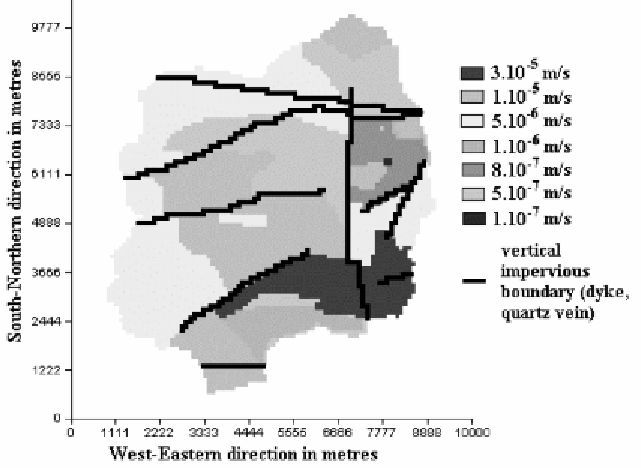Geology Reference
In-Depth Information
Figure 6.
Hydraulic conductivities in the weathered-fissured
granite layer, after calibration.
of similar watersheds (Rangarajan and Prasada Rao, 2001). The specific
yield of the weathered rocks was also used for the calculation of preferential
recharge. This value lies within the orders of magnitude given by the Proton
Magnetic Resonance (PMR) measurements carried out in the watershed
(Legchenko and Baltassat, 1999). In the fissured granite, this specific yield
is assumed constant at a value of 1%, which is close to the value deduced
from the discrete-fracture network interpretation (0.8%, Bruel et al., 2002),
from pumping test interpretations (0.63%; Maréchal et al., 2004) and water-
table fluctuation interpretations (1.4%; Maréchal et al., 2006). Some sensitivity
tests were made by decreasing the specific yield in layer 2 by one order of
magnitude. This led to a lowering of the simulated water levels due to the
effect of pumping.
Storativity of the weathered layer (as a confined aquifer) plays a role in
the flow calculations only when this layer becomes saturated (Engerrand,
2002). Its value was taken as 8.10
-5
. For layer 2, the storativity value was
set at 1.10
-5
.
Aquifer Flows: Recharge, Discharge and Irrigation Return
Total recharge can be divided into three main components (Lerner et al.,
1990): direct recharge (by direct vertical percolation through the vadose
zone - saprolite), indirect recharge (percolation to the water table through the
beds of surface-water courses, almost nil in the study area due to absence of

